The five winning projects offer a diverse vision for the future of the Cai River – from ecological restoration, increasing climate resilience to preserving cultural memory and creating community spaces.
Nha Trang Elasticity - Chulalongkorn University, Thailand
The winning project, Nha Trang Elasticity, is based on addressing the pressures of urbanization and environmental degradation. The project aims to transform Nha Trang into a sustainable and resilient urban city through the integration of green infrastructure, ecosystem restoration, and community-based eco-tourism. The project develops a long-term transformation plan with a core of resilient and adaptive urban landscape designs, focusing on reconnecting fragmented ecosystems, restoring floodplains, and enhancing biodiversity. The highlight of the project is the Eco-Tourism Route, which stimulates the local economy , facilitates the spread of economic benefits to communities, and strengthens Nha Trang's position as a destination with a unique ecosystem.
The plan includes three phases of implementation over 15 years, with specific target strategies:
Phase 1 : Focus on converting flood-prone areas into natural wetlands to absorb, regulate and slow down the flow of floodwater, while using green infrastructure - water surfaces, "pocket parks" to restore green spaces in the heart of the city.
Phase 2: Increase ecological connectivity and coastal resilience with iconic structures - a 6.5 km long ecological pedestrian bridge, beach restoration, artificial sand dunes, and application of LID (Low Impact Development) regulations to minimize the impact of urban development on the natural environment.
Phase 3: Propose floating Green Platforms along the river to reduce erosion, reclaim floodplains along the river and expand urban green space, complementing Phase 1 by enhancing ecological “buffer zones” and providing multifunctional green infrastructure.
Overall, the three phases aim to improve sustainability across three pillars: environmental - social - economic through restoring natural systems, creating comprehensive public spaces and strengthening long-term urban resilience. This proposal not only addresses current challenges but also orients Nha Trang towards becoming a greener, more resilient city that is deeply connected to its natural heritage.
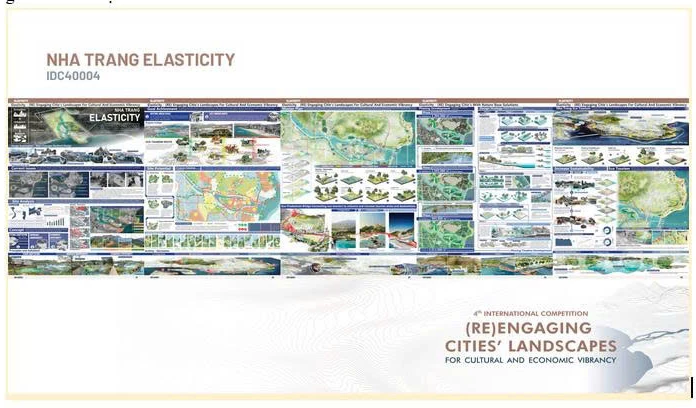 |
(Re)urban - REVitalizing the riverfront city - Van Lang University, Vietnam
According to the (Re)urban - REVitalizing the Riverfront City project, it is the lack of planning along the river due to decades of spontaneous urbanization that has led to unsystematic land use, environmental degradation and social disconnection. The project emphasizes the importance of the Cai River in the urban landscape and daily life of Khanh Hoa people - not just as a geographical element, but as a cultural "backbone", community center and natural infrastructure.
The project applies the “patchwork planning” method - preserving valuable existing structures, while “inserting” new elements such as green walkways, soft embankments, cultural spaces and public facilities. This approach helps heal the urban area through continuity, rather than replacement and demolition, creating an organic development system, balancing the past, present and future. In addition, the project aims at ecological regeneration, restoring cultural memories, and promoting community participation through plans that blend the environment and local life culture. Small interventions such as pocket parks, community gardens, floating floors or walkways connecting rivers - mountains - residential areas are flexibly designed, creating a network of open, friendly and sustainable spaces.
In conclusion, the project demonstrates the philosophy of urban development based on memory, aiming for a river that is both a living space and a symbol of identity, but still opens up space for innovation, so that Cai River becomes a living infrastructure - where nature, people and urban areas develop sustainably together.
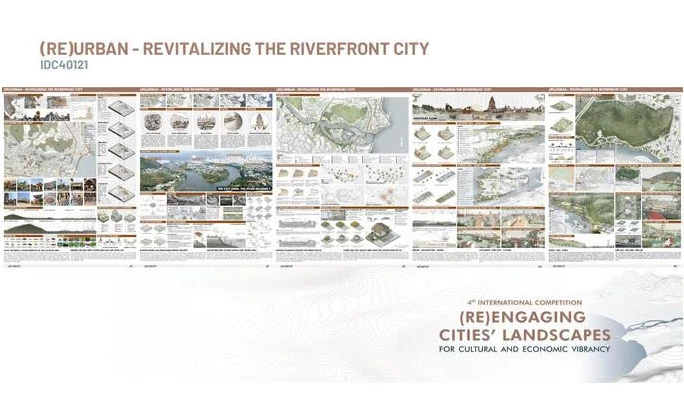 |
Threads City - Stitching Urban Fabrics of Nha Trang City Towards Resilient Civic Prosperity - Ho Chi Minh City University of Technology, Vietnam National University, Ho Chi Minh City, Vietnam
Threads City - Stitching Urban Fabrics of Nha Trang City Towards Resilient Civic Prosperity approaches the problem from the perspective of Landscape Urbanism and Nature-based Solutions. The issues approached are the key socio-ecological challenges to building a sustainable urban landscape, such as: the disconnection between urban areas and Cai River, the decline of traditional craft villages, over-reliance on tourism, and the ineffective exploitation of riverside areas.
Taking the Cai River ecosystem and coastal areas as the center, the project restructures urban space through the interweaving of green corridors, cultural nodes and community spaces, aiming to enhance ecological resilience, nurture cultural vitality and diversify the economy - while reflecting the spirit of the competition theme.
Faced with the reality that rapid urbanization is putting pressure on Nha Trang's rich cultural heritage, especially Cham weaving and traditional fishing, the project proposes a multi-layered development framework - from regional networks, urban regeneration to local community engagement - through methods such as “Stitching within Community” and “Stitching along Communities.”
The solution aims to develop sustainable tourism - including eco-tourism, cultural and marine tourism, while promoting sustainable urban prosperity, supported by landscape tours, green - water network and handicraft promotion center, contributing to the comprehensive regeneration of Nha Trang urban space.
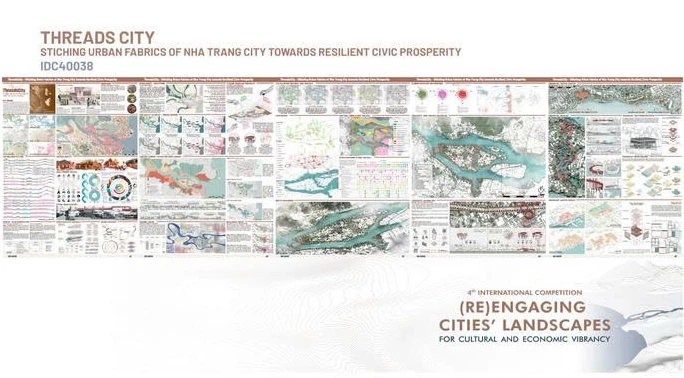 |
Miracai - A Journey Through Stories and Streams - University of Economics Ho Chi Minh City, Vietnam
“Miracai - A Journey Through Stories and Streams” brings the context of Khanh Hoa towards the goal of becoming the sixth centrally-governed city of Vietnam, the Cai River Heritage axis is identified as a strategic link connecting with Dien Khanh and an important foundation for urban - cultural - tourism development. The project's vision to 2025 aims to turn Cai River into an ASEAN-standard "Living Heritage", both preserving historical values and creating a driving force for sustainable development.
Three main orientations were established including:
- Preservation, promotion and digitalization of heritage: The Cai River is the “cultural backbone” connecting tangible and intangible heritage. Key solutions include developing clusters of cultural works - such as folk theaters, water puppetry stages, spiritual museums, flower lantern bridges - along with craft village squares and a unified design language along the heritage axis.
Restoring the ecosystem and improving the quality of life: Taking ecology as the urban shaping framework, the project focuses on climate change adaptation, transforming low-lying areas into ecological parks, developing urban agriculture, and forming riverside markets associated with local foods.
- Developing a circular economy: Promoting a closed production - consumption - recycling model, combining night-time economic development with a chain of cultural - culinary - riverside tourism activities. Smart technology is applied to manage, warn and operate automatic irrigation and fire prevention systems.
- Overall, the Cai River heritage axis is oriented to become an urban space in harmony between nature, culture and people, symbolizing a dynamic, sustainable and identity-rich Nha Trang in the future.
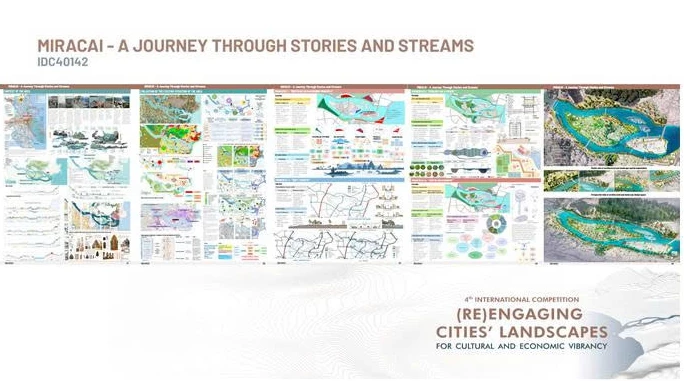 |
The Living Heritage Flow - Chiang Mai University, Thailand
The Living Heritage Flow project presents a comprehensive design vision that recreates the Cai River corridor as a space where culture, ecology and urbanity intersect. By interweaving water flow, movement and wind, the project creates a framework for sustainable development, strengthens the ecosystem and maintains cultural identity. The highlight is the system of works (natural or artificial) designed to retain sand and mud, reduce erosion and restore riverside ecosystems, creating diverse habitats and community spaces, combined with green embankments to prevent erosion and soften urban boundaries.
The project applies Water Sensitive Urban Design (WSUD) with permeable areas, artificial wetlands, decentralized wastewater treatment to reduce flooding and increase community interaction with the water cycle. At the same time, Natural Solutions (NbS) such as pocket parks, green walkways, and natural playgrounds help improve microclimate, increase biodiversity and social connection.
The proposal is implemented in 3 phases:
Phase 1 - Protection: Establish erosion control zones, increase permeable surfaces, and raise public awareness.
Phase 2 - Restoration: Restore wetland ecosystems, connect green areas and initiate community development.
Phase 3 - Maintain & Activate: Preserve the redeveloped landscape and create cultural heritage routes, connecting residents and visitors to landmarks, stories and public art.
The integrated monitoring system tracks metrics such as water quality, biodiversity levels and community engagement, and adjusts dynamically over time.
Overall, the project is a strategy to reconnect natural and human history through landscape. It encourages the community to engage, care for, and rediscover the river – as a living ecosystem and a cultural space with profound meaning.
The International Design Competition is an annual activity organized by the UEH Institute of Smart Cities and Management to create a creative playground for domestic and foreign students to contribute ideas for the future of urban areas.
In 2025, the contest was held for the 4th time with the theme "Sustainable Economic and Cultural Development through Connecting Urban Landscapes in the Cai River Area, Khanh Hoa Province", focusing on the Cai River area, where the layers of cultural - historical - ecological values typical of Khanh Hoa crystallize. The research sites include Ponagar Tower - a typical Champa architectural complex associated with the spiritual life of the people, and Xom Bong - a unique community cultural space that is gradually fading under the pressure of urbanization. After 6 months of organization, the contest attracted 500 registered contestants from 160 teams from 25 different countries to participate. The entries were selected, evaluated and scored strictly by the organizing committee and the jury including experts from many prestigious universities around the world.
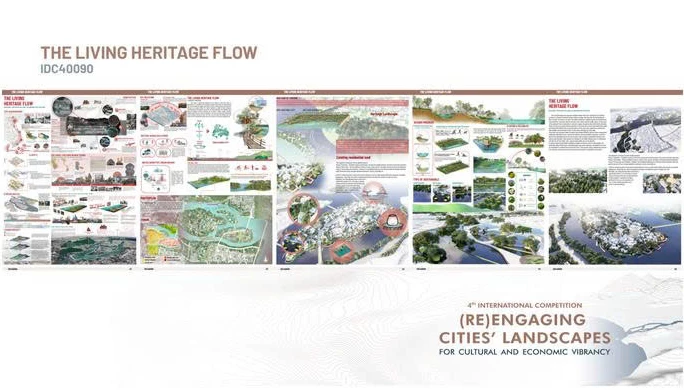 |
The competition is one of the activities within the framework of UEH's local cooperation strategy through the strategic branch UEH Nexus Campus Nha Trang, positioned as "A place where scholars and global knowledge converge". This is an important step contributing to the realization of Resolution No. 09-NQ/TW of the Politburo and Resolution No. 01-NQ/TU of Khanh Hoa province, while promoting the goal of making Khanh Hoa a centrally-run city, achieving sustainable growth, and positioning UEH Nexus Campus Nha Trang as an international academic center of the Central region.
Source: https://baokhanhhoa.vn/xa-hoi/202510/cuoc-thi-thiet-ke-quoc-te-lan-4-cung-duong-di-san-ven-song-cai-tinh-khanh-hoa-5-du-an-thiet-ke-xuat-sac-khang-dinh-lai-vai-tro-cua-song-cai-trong-tuong-lai-a221b40/


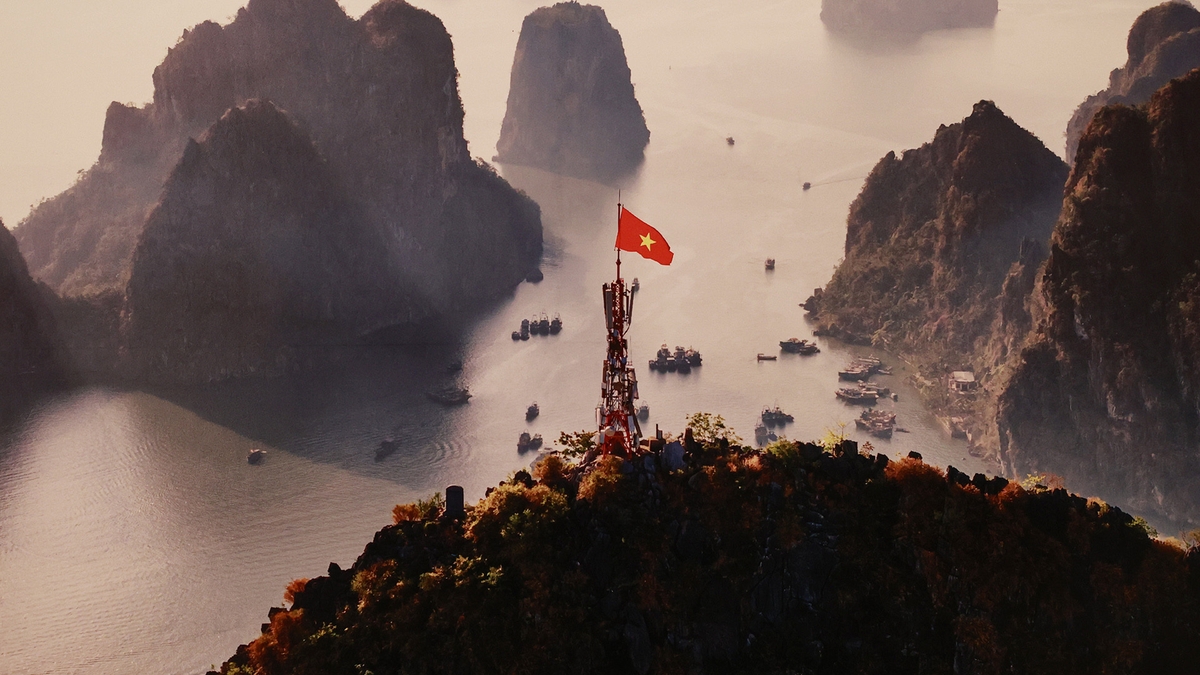

![[Photo] General Secretary To Lam attends the 95th Anniversary of the Party Central Office's Traditional Day](https://vphoto.vietnam.vn/thumb/1200x675/vietnam/resource/IMAGE/2025/10/18/1760784671836_a1-bnd-4476-1940-jpg.webp)
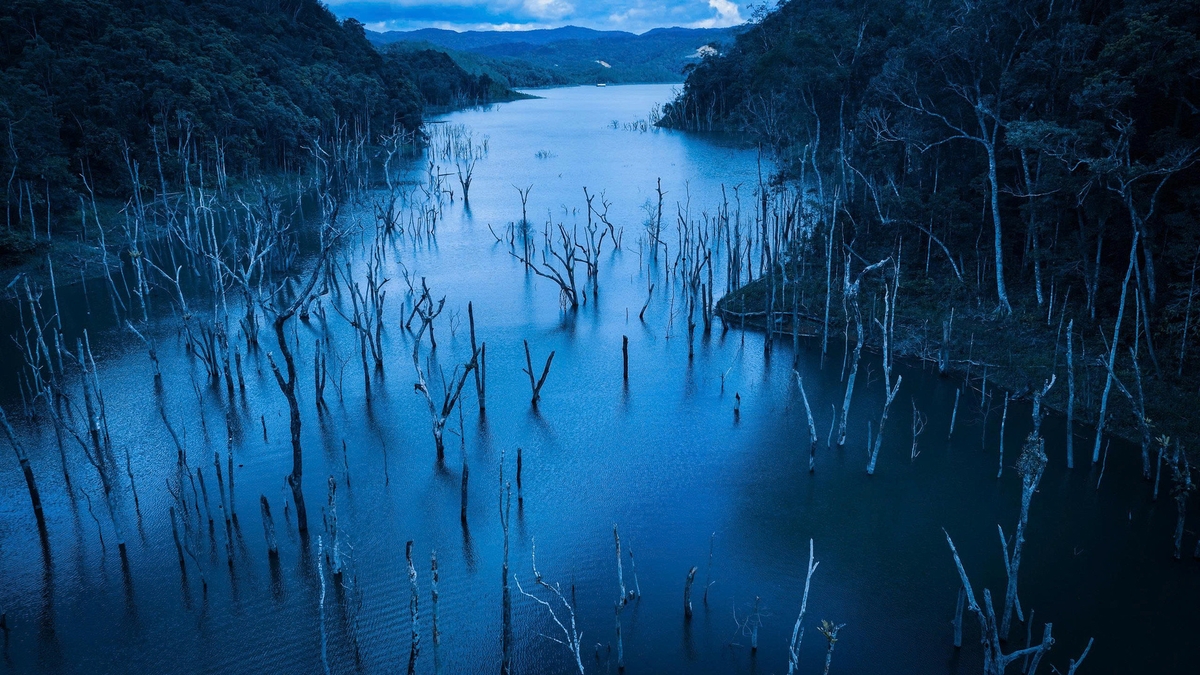
![[Photo] Collecting waste, sowing green seeds](https://vphoto.vietnam.vn/thumb/1200x675/vietnam/resource/IMAGE/2025/10/18/1760786475497_ndo_br_1-jpg.webp)
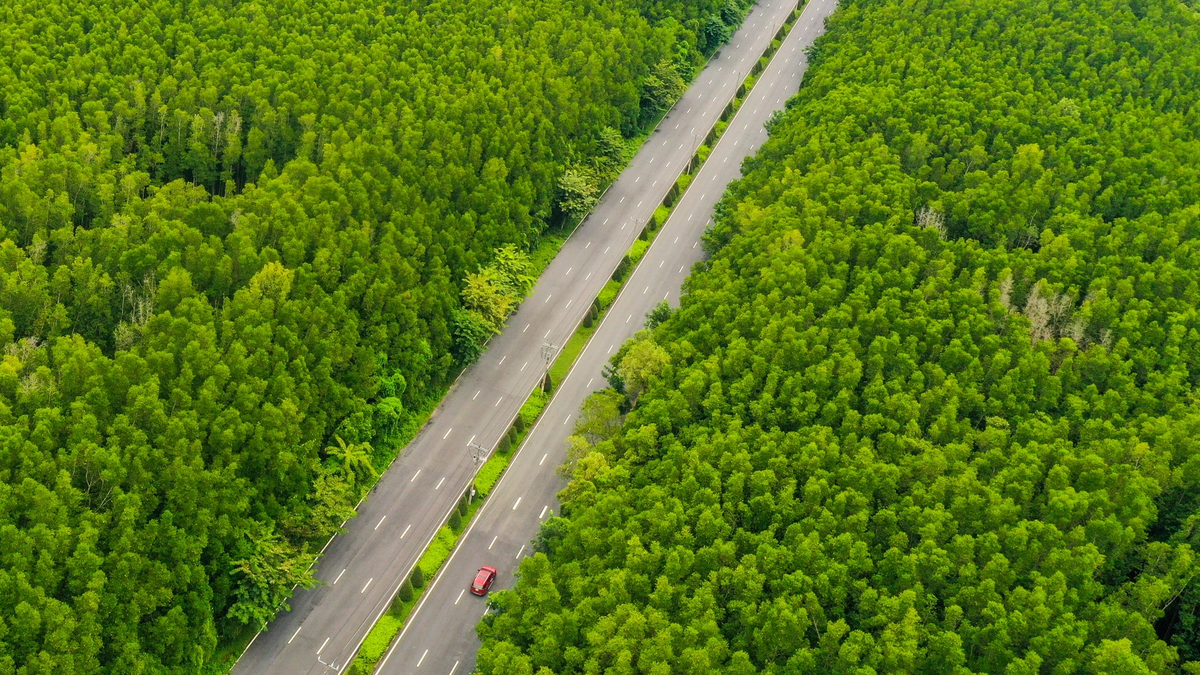
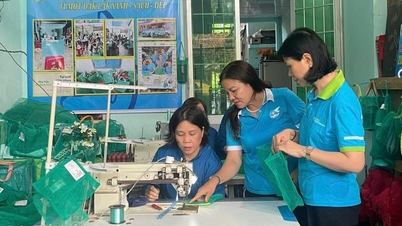

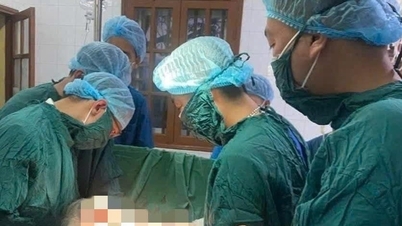

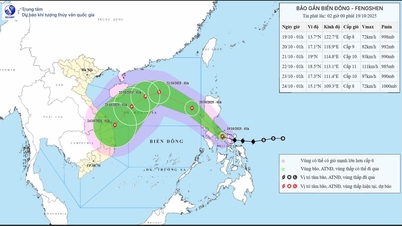

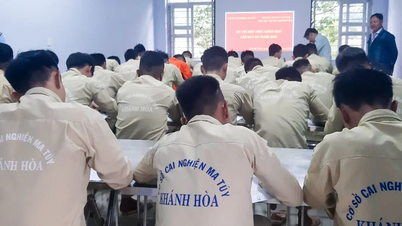

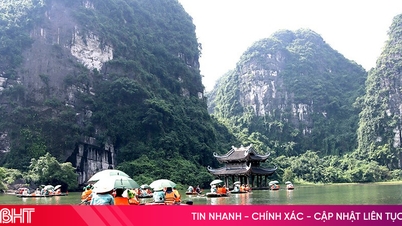

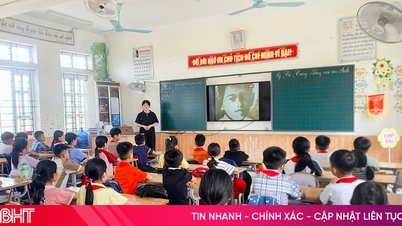





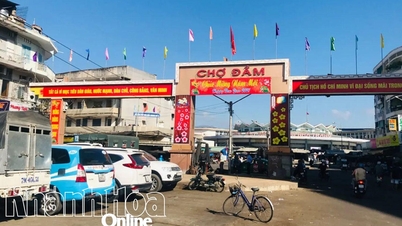
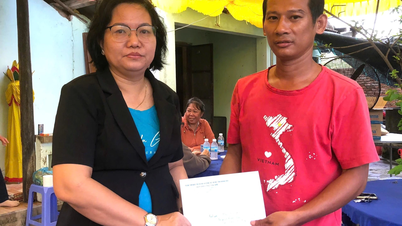
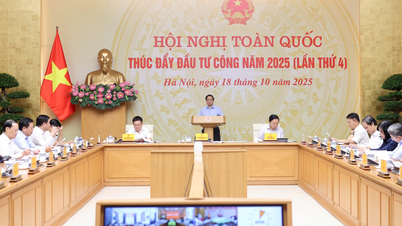
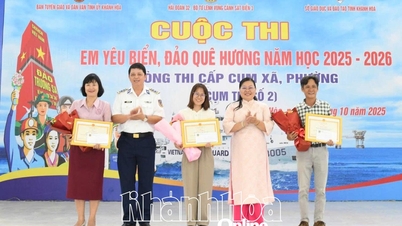
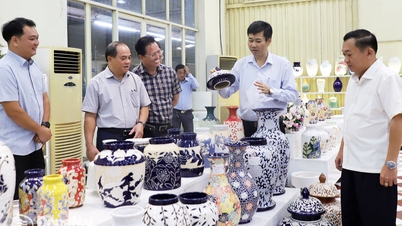




































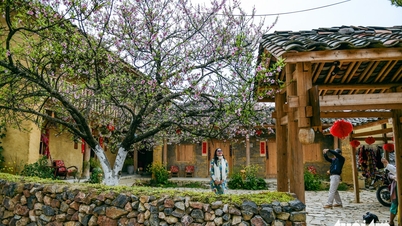











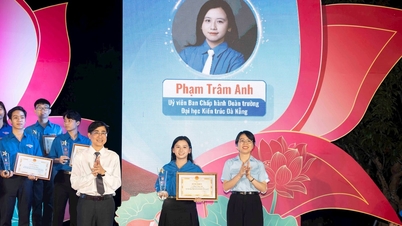



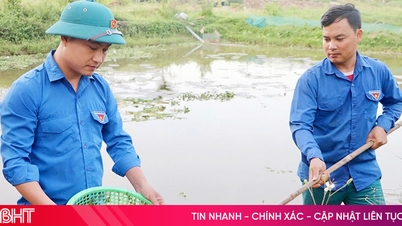
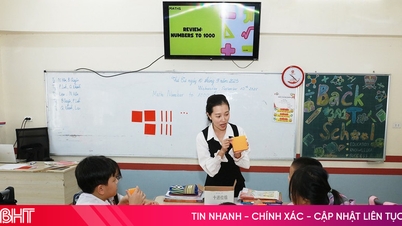


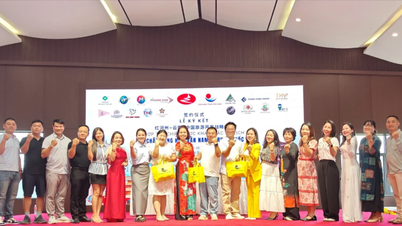











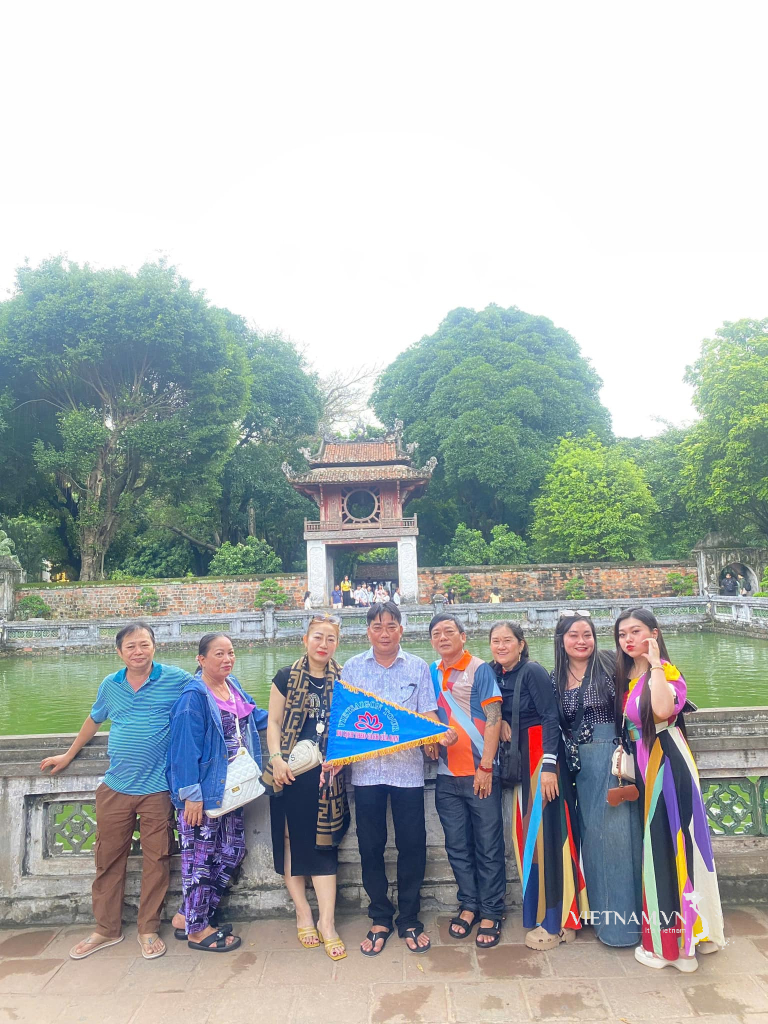


Comment (0)